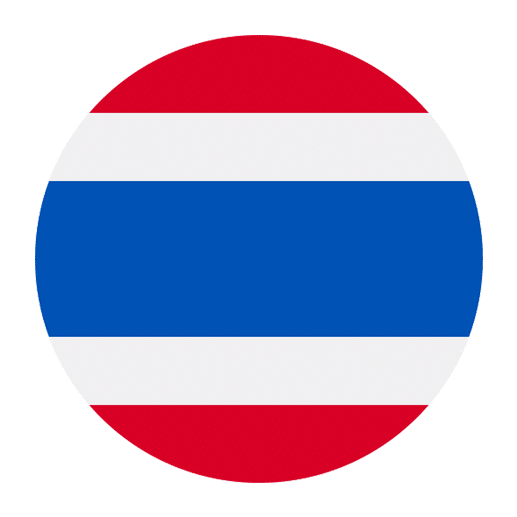The Tai-Kadai language family, often abbreviated as TK, is a fascinating linguistic group that holds a significant place in Southeast Asia. When we think of this language family, the Thai language—spoken predominantly in Thailand—typically comes to mind first. However, the Tai-Kadai family encompasses a diverse array of languages spoken across several countries, including Thailand, Laos, China, and Vietnam. Understanding the Tai-Kadai language family not only provides insights into these languages themselves but also opens a window into the rich cultural and historical contexts in which these languages have evolved.
Origins and History of the Tai-Kadai Language Family
The Tai-Kadai language family has a deep-rooted history that is interwoven with the migrations and cultural developments of the peoples of Southeast Asia. Linguists trace the origins of the Tai-Kadai languages to southern China, where ancient inscriptions and historical records provide clues about their early forms. Over millennia, the speakers of these languages migrated southwards, leading to the establishment of various Tai-Kadai-speaking communities across modern-day Thailand, Laos, Vietnam, and Myanmar.
One theory suggests that the Tai-Kadai languages are related to the Sino-Tibetan languages, while another posits a connection with the Austronesian language family. These theories reflect the complexity and interrelatedness of the linguistic landscape in this region. The ongoing debates among linguists about these relationships underscore the dynamic nature of language evolution and migration.
Migration Patterns
The migration patterns of the Tai-Kadai-speaking peoples have significantly influenced the languages within this family. As groups moved and settled in new regions, their languages adapted to new environments and interactions with other linguistic groups. This process of adaptation and change has led to the rich linguistic diversity we observe today.
For example, the Thai people, whose language is the most widely spoken in the Tai-Kadai family, migrated from southern China to the Chao Phraya River basin in what is now Thailand. This migration, which occurred over several centuries, resulted in significant cultural and linguistic assimilation with the indigenous populations they encountered.
Classification and Structure
The Tai-Kadai language family is classified into several branches, with the primary divisions being Tai, Kam-Sui, Kra, and Hlai. Each of these branches contains numerous languages and dialects.
Tai Branch
The Tai branch is the most prominent and includes well-known languages such as Thai, Lao, Shan, and Zhuang. These languages share common linguistic features and have mutual intelligibility to varying degrees.
– **Thai**: Spoken by over 70 million people, Thai is the official language of Thailand and has several dialects, including Central Thai, Northern Thai, and Southern Thai.
– **Lao**: The official language of Laos, Lao is closely related to Thai, and the two languages share a high degree of mutual intelligibility.
– **Shan**: Spoken in Myanmar, Shan is similar to Northern Thai and shares many linguistic features with it.
– **Zhuang**: Predominantly spoken in the Guangxi Zhuang Autonomous Region of China, Zhuang is the largest minority language in China.
Kam-Sui Branch
The Kam-Sui branch includes languages such as Kam and Sui, spoken in southern China. These languages are less well-known outside of their regions but are important for understanding the diversity within the Tai-Kadai family.
– **Kam**: Spoken by the Dong people in Guizhou, Hunan, and Guangxi provinces, Kam has several dialects and is known for its rich oral literature and folk songs.
– **Sui**: Spoken by the Sui people in Guizhou province, Sui has a unique script and is known for its traditional water buffalo horn alphabets.
Kra Branch
The Kra branch, also known as Geyang, includes languages spoken in southern China and northern Vietnam. These languages are less commonly studied but are crucial for a comprehensive understanding of the Tai-Kadai family.
– **Gelao**: Spoken in Guizhou, Guangxi, and Yunnan provinces, Gelao has several dialects and is considered an endangered language due to the small number of speakers.
– **Lachi**: Spoken in northern Vietnam, Lachi is another example of the linguistic diversity within the Kra branch.
Hlai Branch
The Hlai branch is represented by languages spoken on Hainan Island in China. These languages are distinct from the mainland Tai-Kadai languages but share common ancestral roots.
– **Hlai**: Also known as Li, Hlai is spoken by the Li people on Hainan Island and has several dialects. The language is known for its unique phonetic and tonal systems.
Phonology and Tonal Systems
One of the defining features of the Tai-Kadai languages is their tonal nature. Like many other languages in East and Southeast Asia, Tai-Kadai languages use tones to distinguish meaning between words that otherwise have the same phonetic structure. This tonal aspect adds a layer of complexity to the languages but also enriches their expressiveness.
Tones in Tai-Kadai Languages
The number of tones varies among the Tai-Kadai languages. For example, Thai has five tones: mid, low, falling, high, and rising. Each tone changes the meaning of a word, making tonal accuracy crucial for effective communication. Lao, on the other hand, has six tones, while some dialects of Zhuang have up to nine tones.
Phonetic Characteristics
In addition to tones, Tai-Kadai languages exhibit unique phonetic characteristics. Consonant clusters are relatively rare, and syllables typically follow a consonant-vowel (CV) or consonant-vowel-consonant (CVC) structure. Vowel length is also distinctive, with many languages differentiating between short and long vowels.
Grammar and Syntax
The grammatical structures of Tai-Kadai languages share several common features, although there is significant variation across the different languages and dialects.
Word Order
The typical word order in Tai-Kadai languages is Subject-Verb-Object (SVO). This structure is consistent with many other languages globally and facilitates straightforward sentence construction. For example, in Thai, the sentence “I eat rice” would be structured as “Chan kin khao” (I eat rice).
Classifiers
Classifiers are an essential grammatical feature in Tai-Kadai languages. These are words used to classify nouns based on their characteristics, such as shape, size, or type. For instance, in Thai, the classifier for animals is “tua,” so to say “two dogs,” one would say “ma song tua” (dog two CL).
Verb Aspects and Tenses
Tai-Kadai languages often use particles or auxiliary verbs to indicate tense and aspect rather than inflection. For example, in Thai, the particle “ja” is used to indicate future tense, while “laew” indicates past tense. Thus, “I will eat” is “Chan ja kin,” and “I ate” is “Chan kin laew.”
Writing Systems
The writing systems of Tai-Kadai languages are diverse and reflect the cultural and historical influences on these languages.
Thai Script
The Thai script is an abugida, derived from the Old Khmer script, which in turn was influenced by the Brahmi script of India. The script consists of 44 consonants, 15 vowel symbols that combine into at least 28 vowel forms, and four tone marks. The script is written horizontally from left to right.
Lao Script
The Lao script is closely related to the Thai script, with some differences in the shapes of letters and the omission of certain consonants. Like Thai, the Lao script is an abugida and uses tone marks to indicate the tones of syllables.
Other Scripts
Other Tai-Kadai languages use a variety of scripts. For instance, the Zhuang language uses both the Latin alphabet and a traditional script known as Sawndip, which is based on Chinese characters. The Kam and Sui languages have their own scripts, which are less widely known but are of great cultural significance.
Cultural Significance
The languages within the Tai-Kadai family are not just means of communication but are also integral to the cultural identities of the people who speak them. They are vehicles for preserving oral traditions, literature, music, and rituals.
Oral Traditions
Many Tai-Kadai languages have rich oral traditions, including folktales, legends, and epic poems. These oral narratives are often passed down through generations and play a crucial role in maintaining cultural heritage. For instance, the Kam people are known for their epic songs, which recount historical events and moral lessons.
Literature and Music
Literature and music are other important cultural expressions. The Thai language boasts a rich literary tradition, with classical works such as the Ramakien (the Thai version of the Indian epic Ramayana) and modern novels and poetry. Similarly, Lao literature includes ancient manuscripts and contemporary works that reflect the country’s history and culture.
Music is another vital cultural element, with traditional instruments and folk songs forming an integral part of community life. For example, the khene (a bamboo mouth organ) is a traditional Lao instrument used in various ceremonies and festivals.
Challenges and Preservation Efforts
Despite the rich linguistic and cultural heritage of the Tai-Kadai language family, many of these languages face challenges related to globalization, modernization, and language shift.
Endangered Languages
Several Tai-Kadai languages are considered endangered, with a declining number of speakers. Factors contributing to this decline include urbanization, migration, and the dominance of national languages such as Thai and Lao. For example, languages in the Kra and Hlai branches often have very few speakers left, putting them at risk of extinction.
Preservation Efforts
Efforts to preserve and revitalize Tai-Kadai languages are underway in various regions. These efforts include documentation projects, the creation of educational materials, and community-based language programs. For example, in China, the government has initiated projects to document and promote the Zhuang language, including the development of textbooks and the inclusion of Zhuang in school curricula.
Non-governmental organizations and academic institutions also play a crucial role in language preservation. Linguists and anthropologists work with local communities to record and analyze endangered languages, ensuring that they are preserved for future generations.
Conclusion
The Tai-Kadai language family is a testament to the linguistic diversity and cultural richness of Southeast Asia. From the widely spoken Thai and Lao languages to the lesser-known languages of the Kam-Sui, Kra, and Hlai branches, each language offers unique insights into the history, culture, and identity of its speakers. Understanding the Tai-Kadai languages not only enhances our appreciation of this linguistic family but also underscores the importance of preserving these languages for future generations. As we continue to explore and document these languages, we contribute to the broader goal of safeguarding the world’s linguistic heritage.

